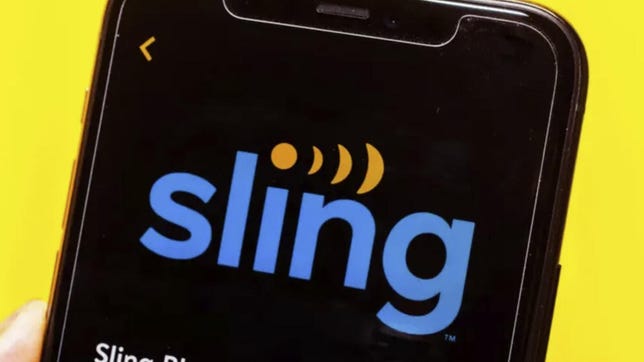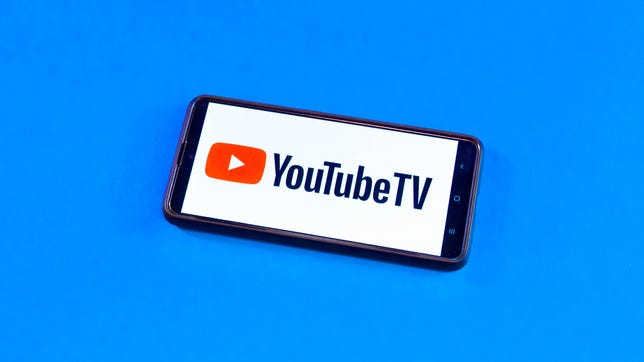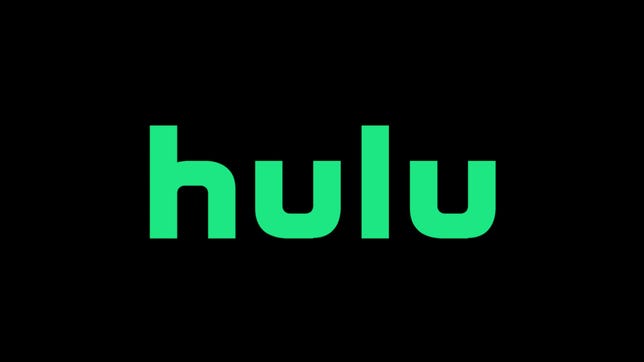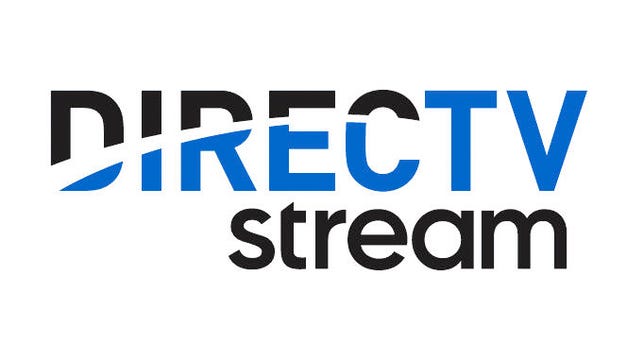Technologies
World Baseball Classic 2023: Schedule, Format, How to Watch and Stream From Anywhere
The WBC tournament is in full swing, with a packed slate of games all day on Saturday.

Spring training games have begun, but many Major League baseball players have entered a two-week break from practices and practice games in Arizona and Florida to play for their countries in the World Baseball Classic.
With a roster of 30 MLB players, Team USA enters the tournament as the defending champion. The Dominican Republic (winner in 2013) and Japan (two-time champ, in 2009 and 2006) loom as the biggest obstacles to an American repeat. Team USA kicks off its title defense against Great Britain at 9 p.m. ET (6 p.m. PT) on Fox.
The tournament started on March 7 and runs to March 21. Games are being shown on Fox, FS1, FS2 and Fox Deportes. Here’s everything you need to know to watch the WBC, with or without cable.


Mookie Betts is trading Dodger blue for red, white and blue while he suits up for Team USA in the World Baseball Classic.
Ric Tapia/Icon Sportswire/Getty ImagesWhat is the schedule and format of the WBC?
Twenty teams will play in this year’s tournament, up from 16 teams in past years. There are four different pools of five teams each. The top two teams in each pool will advance to the quarterfinals, at which point it becomes an eight-team, single-elimination tournament.
- Pool play: March 7 to 15
- Quarterfinals: March 15 to 18
- Semifinals: March 19 and 20
- Championship: March 21
Where are the WBC games being played?
The tournament will be held in four locations, two in the US and two in Asia:
- LoanDepot Park (home of the Miami Marlins) in Miami
- Chase Field (home of the Arizona Diamondbacks) in Phoenix
- Tokyo Dome in Tokyo
- Taichung Intercontinental Baseball Stadium in Taichung, Taiwan
Which countries are playing in the World Baseball Classic?
Here’s how the 20 teams are arranged in the four pools:
Pool A
- Cuba
- Netherlands
- Italy
- Chinese Taipei
- Panama
Pool A will play its games in Taiwan.
Pool B
- Japan
- South Korea
- Australia
- China
- Czech Republic
Pool B will play its games in Japan.
Pool C
- United States
- Mexico
- Canada
- Colombia
- Great Britain
Pool C will play its games in Phoenix.
Pool D
- Dominican Republic
- Venezuela
- Puerto Rico
- Israel
- Nicaragua
Pool D will play its games in Miami.
Pool A and B quarterfinals will be played in Japan. Pool C and D quarterfinals will be played in Miami. The semifinals and championship game will be played in Miami.
Who are the biggest MLB stars playing in the WBC?
USA: Mike Trout, Mookie Betts, Trea Turner, Pete Alonso, Paul Goldschmidt, Nolan Arenado
Dominican Republic: Vladimir Guerrero Jr., Manny Machado, Rafael Devers, Juan Soto, Wander Franco, Julio Rodríguez, Sandy Alcantara
Japan: Shohei Ohtani, Yu Darvish
Venezuela: Ronald Acuña Jr., Jose Altuve
Netherlands: Xander Bogaerts
Puerto Rico: Francisco Lindor
Canada: Freddie Freeman
You can see the full roster for each WBC team here.
When does Team USA play?
Here’s the schedule for the US team’s four games in Pool C:
- Game 1 vs. Great Britain: March 11 at 6 p.m. PT (9 p.m. ET) on Fox
- Game 2 vs. Mexico: March 12 at 7 p.m. PT (10 p.m. ET) on FS1
- Game 3 vs. Canada: March 13 at 7 p.m. PT (10 p.m. ET) on FS1
- Game 4 vs. Colombia: March 15 at 7 p.m. PT (10 p.m. ET) on FS1
The tournament starts at 11 p.m. ET (8 p.m. PT) on March 7 with the first game between Cuba and the Netherlands. You can see the full WBC schedule here.
How can I watch the World Baseball Classic?
You can watch the WBC on Fox, FS1, FS2 and Fox Deportes with a live TV streaming service, but keep in mind that not every service carries every local network, so check each one using the links below to make sure it carries Fox in your area. The key channel for the WBC is FS1, which will not only show three of Team USA’s first four games but will also show both semifinal games and the title game.
Games can also be streamed live online through FoxSports.com or the Fox Sports app, but you’ll need to authenticate with a cable, streaming or satellite login. You don’t need an account to watch the three games on the free, ad-supported Tubi streaming service.
Ric Tapia/Icon Sportswire via Getty Images
You can watch WBC games live at FoxSports.com or the Fox Sports app, but you need to authenticate with a cable, streaming or satellite login. Fox Sports has apps for iOS, Android, Apple TV, Roku, Amazon Fire TV, Google TV and Xbox.
Sling/CNET
Sling’s $40-a-month Blue package includes Fox and FS1, but it carries Fox only in a handful of areas. It does not offer Fox Deportes. You can add FS2 for an extra $11 a month. Read our Sling TV review.
YouTube TV costs $65 a month and includes Fox, FS1 and FS2 but not Fox Deportes. Plug in your ZIP code on its welcome page to see which local networks are available in your area. Read our YouTube TV review.
Fubo TV
FuboTV’s basic plan costs $75 a month and includes Fox, FS1 and FS2. To watch Spanish-language broadcasts on Fox Deportes, you will need to spring for FuboTV’s $86-a-month plan. Click here to see which local channels you get. Read our FuboTV review.
Hulu
Hulu with Live TV costs $70 a month and includes Fox. Click the «View channels in your area» link on its welcome page to see which local channels are offered in your ZIP code. Read our Hulu with Live TV review.
Directv stream
DirecTV Stream’s basic, $75-a-month package includes Fox and FS1. You need to spend $110 to also get FS2. Fox Deportes is not offered. You can use its channel lookup tool to see which local channels are available where you live. Read our DirecTV Stream review.
How to use a VPN to watch the WBC from anywhere
If you’re traveling outside your home country and want to watch the WBC, or just want an added layer of privacy for streaming, there is an option that doesn’t require searching the internet for a sketchy website: You can use a VPN, or virtual private network.
With a VPN, you’re able to virtually change your location on your phone, tablet or laptop to get access to WBC broadcasts, which comes in handy if you find yourself unable to view the games locally. A VPN is the best way to stop your ISP from throttling your speeds by encrypting your traffic. Using a VPN is also a great idea if you’re traveling and find yourself connected to a Wi-Fi network, and you want to add an extra layer of privacy for your devices and logins.
If you can’t find a convenient opportunity to watch the WBC where you live, using a VPN with a US-based server should provide access to some or all of the streaming options listed below. Most VPNs, like our Editors’ Choice, ExpressVPN, make it really easy to do this.
Using a VPN to watch or stream sports is legal in any country where VPNs are legal, as long as you’ve got a legitimate subscription to the service you’re streaming. You should be sure your VPN is set up correctly to prevent leaks: Even where VPNs are legal, the streaming service may terminate the account of anyone it deems to be circumventing correctly applied blackout restrictions. See our list of best VPNs for more and check out other great VPN deals taking place right now.
Sarah Tew/CNET
ExpressVPN is our current best VPN pick for people who want a reliable and safe VPN, and it works on a variety of devices. It’s normally $13 per month, and you can sign up for ExpressVPN and save 49% plus get three months of access for free — the equivalent of $6.67 per month — if you get an annual subscription. Note that ExpressVPN offers a 30-day money-back guarantee.
Quick tips for streaming the WBC using a VPN
- With four variables at play — your ISP, browser, video streaming provider and VPN — experience and success may vary.
- If you don’t see your desired location as a default option for ExpressVPN, try using the «search for city or country» option.
- If you’re having trouble getting the game after you’ve turned on your VPN and set it to the correct viewing area, there are two things you can try for a quick fix. First, log into your streaming service subscription account and make sure the address registered for the account is an address in the correct viewing area. If not, you may need to change the physical address on file with your account. Second, some smart TVs — like Roku — don’t have VPN apps you can install directly on the device itself. Instead, you’ll have to install the VPN on your router or the mobile hotspot you’re using (like your phone) so that any device on its Wi-Fi network now appears in the correct viewing location.
- All of the VPN providers we recommend have helpful instructions on their main site for quickly installing the VPN on your router. In some cases with smart TV services, after you install a cable network’s sports app, you’ll be asked to verify a numeric code or click a link sent to your email address on file for your smart TV. This is where having a VPN on your router will also help, since both devices will appear to be in the correct location.
- And remember, browsers can often give away a location despite using a VPN, so be sure you’re using a privacy-first browser to log into your services. We normally recommend Brave.
Technologies
Judge Blocks Texas App Store Age-Check Law
A preliminary injunction found the Texas law, set to begin Jan. 1, is «more likely than not unconstitutional.»
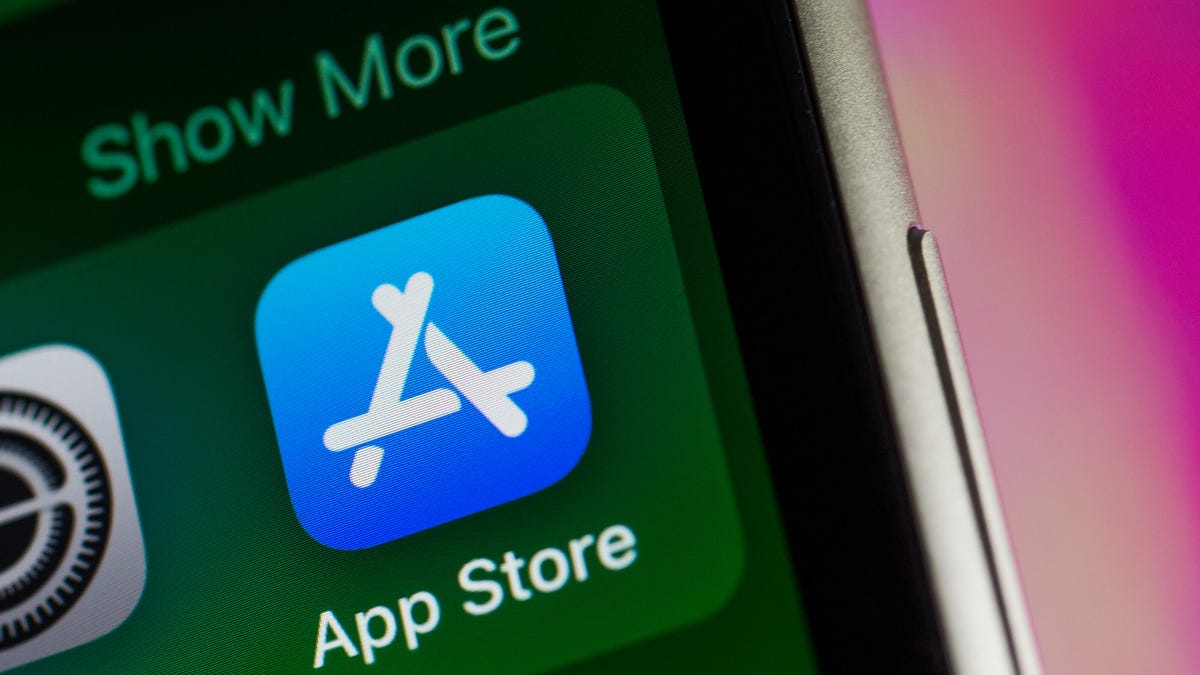
A new Texas state law set to take effect on Jan. 1 would have required app stores to implement age verification processes. But the law has been put on hold, at least temporarily, by a federal court judge.
As reported by the Texas Tribune, Senate Bill 2420, also known as the Texas App Store Accountability Act, is the subject of a temporary injunction issued by US District Judge Robert Pitman.
Pitman said in his decision that the law as written is broad, vague and «more likely than not unconstitutional.» However, he also wrote the court «recognizes the importance of ongoing efforts to better safeguard children when they are on their devices.»
Don’t miss any of our unbiased tech content and lab-based reviews. Add CNET as a preferred Google source.
The Texas law, signed into law by Governor Greg Abbott in May, requires app store operators — including Apple, Google, Nintendo, Steam and more — to build age verification processes for the storefronts and to only allow downloads to minors who obtain parental consent. The injunction is a ruling in an October lawsuit filed by the Computer & Communication Industry Association.
CCIA senior vice president Stephanie Joyce said in a statement, «This Order stops the Texas App Store Accountability Act from taking effect in order to preserve the First Amendment rights of app stores, app developers, parents, and younger internet users. It also protects parents’ inviolate right to use their own judgment in safeguarding their children online using the myriad tools our members provide.»
Other individuals and the advocacy group Students Engaged in Advancing Texas also filed suits over the law, the Texas Tribune reported.
App Store Accountability Act
The bill author, State Senator Angela Paxton, said the bill was meant to give parents «common sense tools to protect their kids and to survive court challenges by those who may have lesser priorities.»
The language of Texas Senate Bill 2420 does not only include mobile app stores from Apple or Google, but any «website, software application, or other electronic service that distributes software applications from the owner or developer of a software application to the user of a mobile device.»
By that definition, websites with links to browser games or mobile game consoles with download options would fall under the Texas law as written. The law also defines mobile devices as including phones and tablets, as well as any other handheld device capable of transmitting or storing information wirelessly.
The parental consent aspect of the law requires those under 18 to have an app store account affiliated with a parent or guardian to purchase or download applications.
Age verification elsewhere
In an effort to keep adult materials out of reach of minors and to protect children from potentially harmful content and interactions, tech companies have been compelled by law or through legal action to verify the age of users.
Roblox, which has a huge audience of minors, began rolling out stricter age verification after investigations and lawsuits hurt its reputation as a safe gaming space. Australia is perhaps the most large-scale example of a government restricting access to online content. In December, Australia began restricting social media access to those 16 and older. Reddit recently challenged that law.
In the US, age verification laws have primarily targeted adult sites. Texas already has a law on the books that requires adult sites to age-block their content. The Supreme Court upheld that law in a June ruling. The UK has also enacted age restriction rules for adult sites as have other US states.
Technologies
Today’s NYT Mini Crossword Answers for Thursday, Dec. 25
Here are the answers for The New York Times Mini Crossword for Dec. 25.
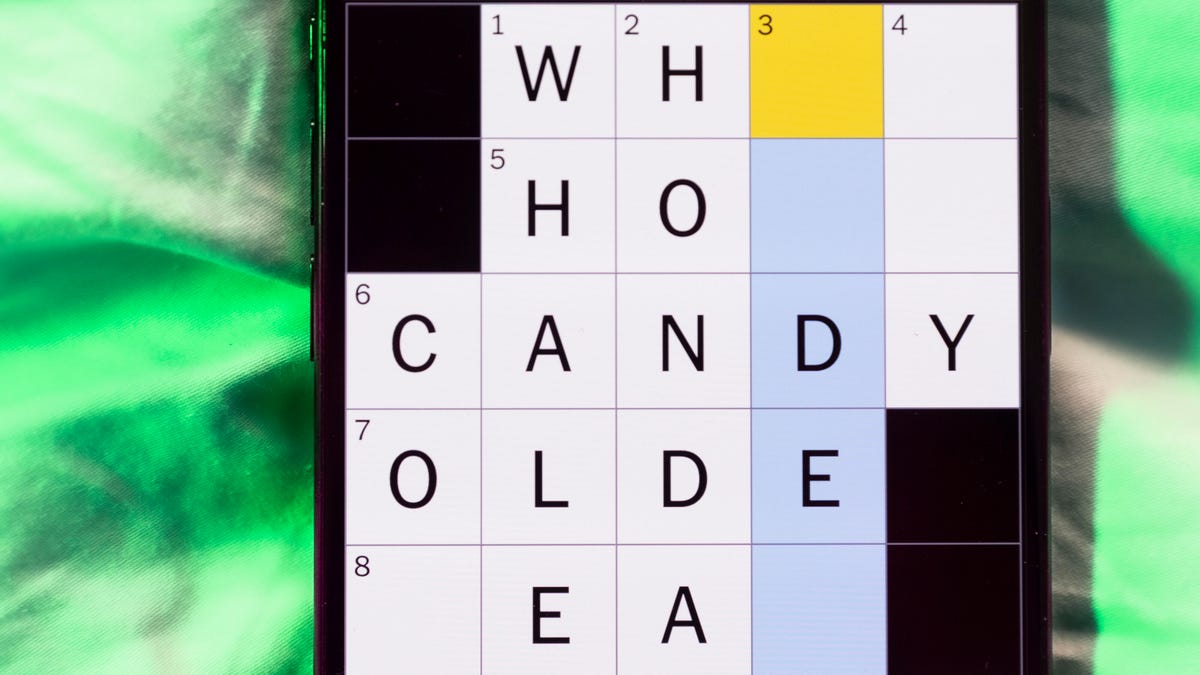
Looking for the most recent Mini Crossword answer? Click here for today’s Mini Crossword hints, as well as our daily answers and hints for The New York Times Wordle, Strands, Connections and Connections: Sports Edition puzzles.
Need some help with today’s Mini Crossword? Of course, there’s a very Christmassy clue involved. And once you solve the entire puzzle, look at the letters used in all the answers and see what they have in common. (5-Across will tell you!) Read on for all the answers. And if you could use some hints and guidance for daily solving, check out our Mini Crossword tips.
If you’re looking for today’s Wordle, Connections, Connections: Sports Edition and Strands answers, you can visit CNET’s NYT puzzle hints page.
Read more: Tips and Tricks for Solving The New York Times Mini Crossword
Let’s get to those Mini Crossword clues and answers.
Mini across clues and answers
1A clue: ___ King Cole, singer with the album «The Magic of Christmas»
Answer: NAT
4A clue: Body drawings, informally
Answer: TATS
5A clue: Letters to ___ (what this Mini was made with)
Answer: SANTA
6A clue: Huge fan, in slang
Answer: STAN
7A clue: «Illmatic» rapper
Answer: NAS
Mini down clues and answers
1D clue: Grandmothers, by another name
Answer: NANAS
2D clue: Abbr. before a name on a memo
Answer: ATTN
3D clue: Org. with long lines around the holidays
Answer: TSA
4D clue: «See ya later!»
Answer: TATA
5D clue: Govt.-issued ID
Answer: SSN
Don’t miss any of our unbiased tech content and lab-based reviews. Add CNET as a preferred Google source.
Technologies
Don’t Let a Border Agent Ruin Your Holiday Trip. Travel With a Burner Phone
Yes, you should leave your main phone at home and take a cheap burner this winter.
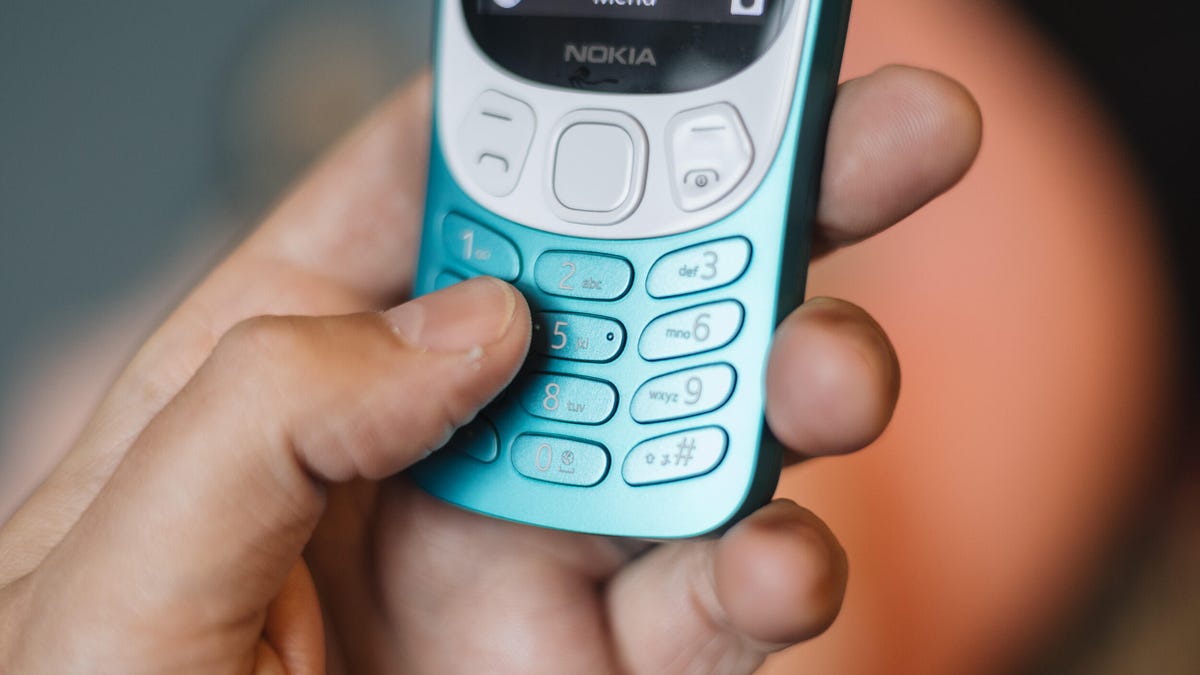
Prepare for a whole new level of border-crossing anxiety this holiday season: the high-probability of a phone search. New figures from US Customs and Border Protection say agents aren’t just glancing at your lock screen anymore — they are aggressively ramping up device inspections, even for citizens coming home. We aren’t just talking about a quick scroll through your photos, either. Agents are increasingly using forensic tools to clone and analyze everything on your device.
The stats are genuinely alarming. In just a three-month window this year, nearly 15,000 devices were flagged for searches, with over a thousand subjected to deep-dive data copying. If you’re traveling with your primary phone, you are essentially carrying your entire digital existence into a legal gray zone where privacy is optional.
The smartest defensive play is remarkably low-tech: the burner phone. By traveling with a secondary, stripped-down device, you ensure your private data stays safe at home while you stay connected abroad. But privacy isn’t the only perk. Moving to a «dumb» phone is the ultimate digital detox, helping you escape the notification trap that usually ruins a vacation.
Even figures like Conan O’Brien have ditched the smartphone to cut through the noise. Whether you’re dodging invasive border searches or just trying to enjoy your trip without being glued to a screen, a burner might be the best travel investment you make this year.
Read more: Best Prepaid Phone of 2025
Although carriers have offered prepaid phones since the ’90s, «burner phones» or «burners» became popular in the 2000s following the celebrated HBO series The Wire, where they helped characters avoid getting caught by the police. Although often portrayed in that light, burners aren’t only used by criminals; they’re also used anyone concerned with surveillance or privacy infringement.
What is a burner phone, and how does it work? Here’s everything you need to know about burners and how to get one.
Don’t miss any of our unbiased tech content and lab-based reviews. Add CNET as a preferred Google source.
What is a burner phone?
A burner phone is a cheap prepaid phone with no commitments. It comes with a set number of prepaid call minutes, text messages or data, and it’s designed to be disposed of after use.
Burner phones are typically used when you need a phone quickly, without intentions of long-term use. They’re contract-free, and you can grab them off the counter. They’re called burner phones because you can «burn» them (trash them) after use, and the phone can’t be traced back to you, which makes them appealing to criminals. Of course, those committed to illicit activities often do more than just throw these phones in the trash, and often completely obliterate the SIM cards and other materials by smashing them with a hammer or melting them away.
Burners are different from getting a regular, contract-bound cellphone plan that requires your information to be on file.
Why should you use a burner phone?
Burner phones are an easy way to avoid cellphone contracts or spam that you get on your primary phone number. Burners aren’t linked to your identity, so you can avoid being tracked down or contacted.
You don’t have to dispose of a burner phone after use. You can add more minutes and continue using it. Burner phones can still function as regular phones, minus the hassle of a contract.
You can also get a burner phone as a secondary phone for a specific purpose, like having a spare phone number for two-factor authentication texts, for business or to avoid roaming charges while traveling. Burner phones are often used by anyone concerned with privacy.
Read more: The Data Privacy Tips Digital Security Experts Wish You Knew
Burner phones, prepaid phones, smartphones and burner SIMs: What’s the difference?
Burner phones are cheap phones with simple designs that lack the bells and whistles of a smartphone. Because they’re designed to be disposable, you only get the essentials, as seen by the most common version, the flip phone.
All burner phones are prepaid phones, but not all prepaid phones are burners. What sets a burner apart is that you won’t have to give away any personal information to get one, and it won’t be traceable back to you. Again, a burner phone is cheap enough to be destroyed after use.
Prepaid smartphones are generally low-end models. You can use any unlocked smartphone with prepaid SIM cards, essentially making it a prepaid phone.
If you want a burner, you don’t necessarily have to buy a new phone. You can get a burner SIM and use it with an existing phone. Burner SIMs are prepaid SIMs you can get without a contract or giving away personal information.
Where can you buy a burner phone?
Burner phones are available at all major retail outlets, including Best Buy, Target and Walmart. They’re also often available at convenience stores like 7-Eleven, local supermarkets, gas stations and retail phone outlets like Cricket and Metro.
You can get a burner phone with cash, and it should cost between $10 and $50, although it may cost more if you get more minutes and data. If you’re getting a burner phone specifically to avoid having the phone traced back to you, it makes sense to pay with cash instead of a credit card.
If you just want a prepaid secondary phone, you can use a credit card. Just keep in mind that credit cards leave a trail that leads back to you.
There are also many apps that let you get secondary phone numbers, including Google Fi and the Burner app. However, these aren’t burners necessarily because the providers typically have at least some of your personal information. Additionally, apps like Google Talk require a phone number that’s already in use for you to choose a number with the service.
If you’re just looking to get a solid prepaid phone without anonymity, check out our full guide for the best prepaid phone plans available. We also have a guide for the best cheap phone plans.
-

 Technologies3 года ago
Technologies3 года agoTech Companies Need to Be Held Accountable for Security, Experts Say
-

 Technologies3 года ago
Technologies3 года agoBest Handheld Game Console in 2023
-

 Technologies3 года ago
Technologies3 года agoTighten Up Your VR Game With the Best Head Straps for Quest 2
-

 Technologies4 года ago
Technologies4 года agoBlack Friday 2021: The best deals on TVs, headphones, kitchenware, and more
-

 Technologies4 года ago
Technologies4 года agoVerum, Wickr and Threema: next generation secured messengers
-

 Technologies4 года ago
Technologies4 года agoGoogle to require vaccinations as Silicon Valley rethinks return-to-office policies
-

 Technologies4 года ago
Technologies4 года agoOlivia Harlan Dekker for Verum Messenger
-

 Technologies4 года ago
Technologies4 года agoiPhone 13 event: How to watch Apple’s big announcement tomorrow


